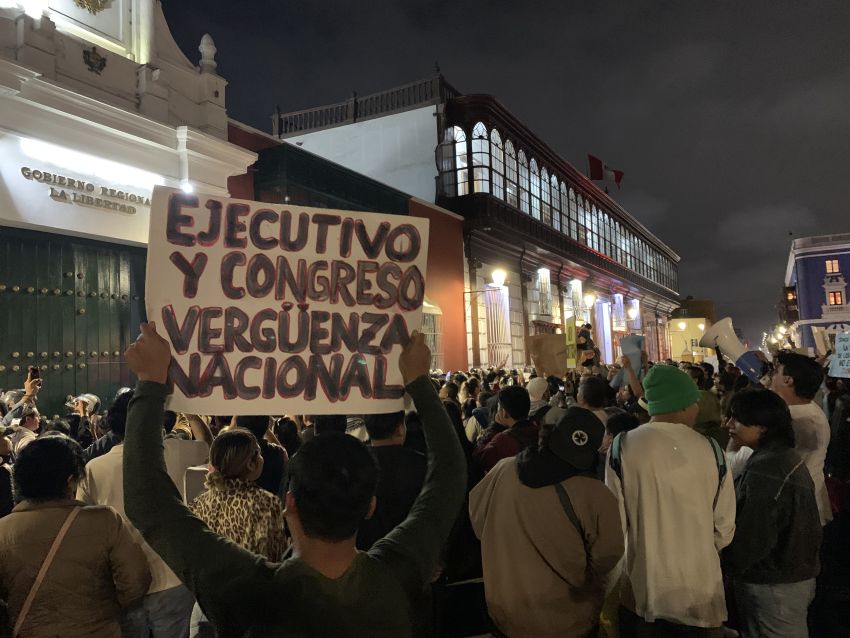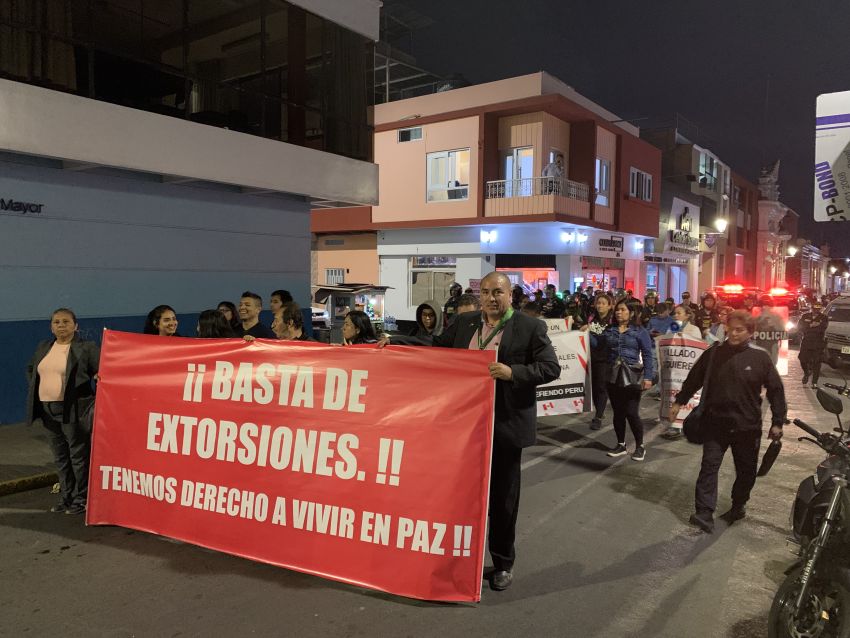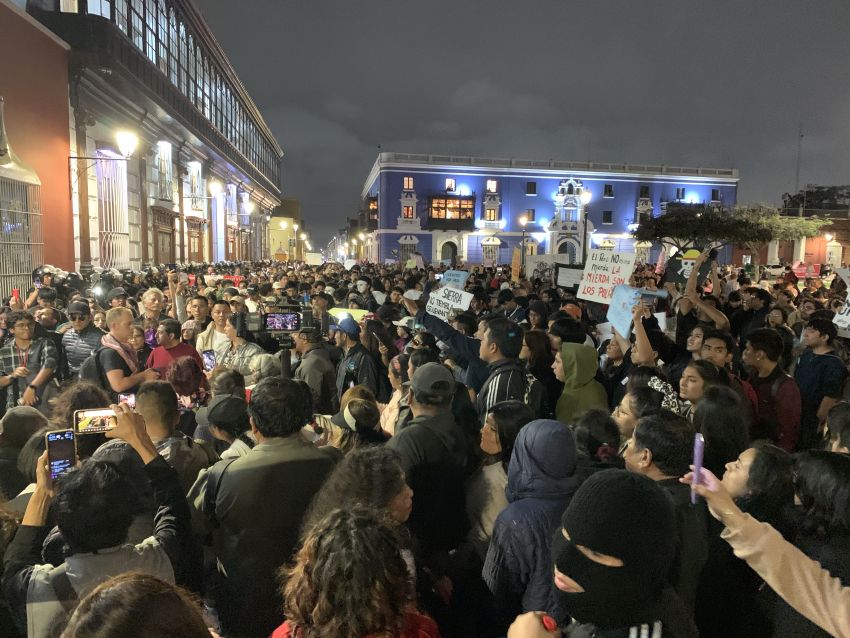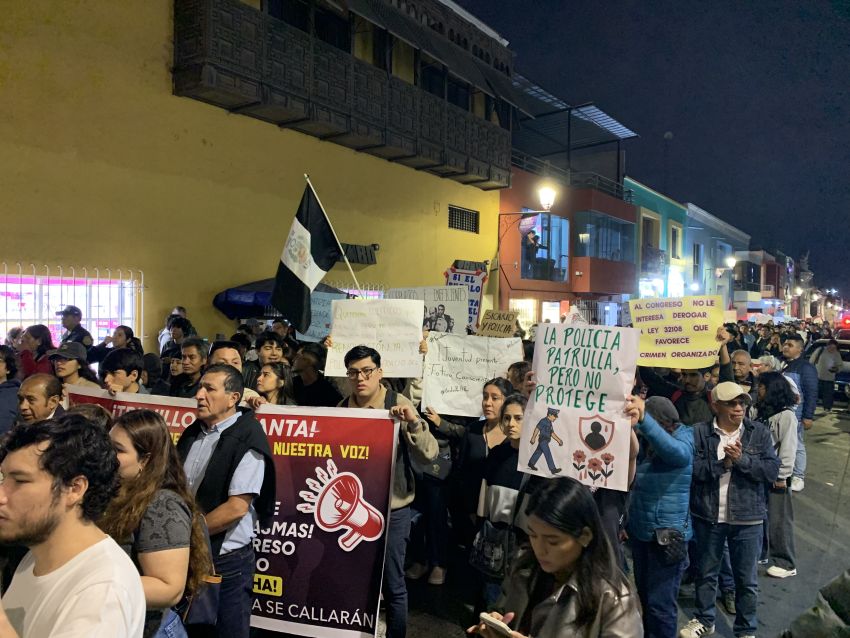
Thousands of young people took to the streets across Peru on October 15 in nationwide marches protesting government corruption, soaring levels of insecurity and a lack of economic opportunities.
The most recent marches follow a series of youth-led “Gen Z” protests since September 20, particularly against a pension reform introduced last month. The law raises the minimum retirement age by five years and obligates everyone over 18 years old to make payments to the national privatised pension fund from 2027, despite widespread job insecurity and informal work.
While there is strong opposition to the new pension law, the protests are more broadly against the self-serving ruling elite, widely seen to be enriching themselves at the expense of ordinary Peruvians. “Que se vayan todos” (“throw them all out”) is a common chant directed at the country’s Congress, in which more than half of congresspeople are under investigation for crimes such as influence peddling, abuse of authority, money laundering and links to organised crime.
The national day of action on October 15 also protested the appointment of right-wing congressman José Jerí as interim president — Peru’s eighth president in less than a decade — until next year’s general elections. Jerí has been accused of rape and illicit enrichment, the latter relating to his tenure as chairman of the legislative committee overseeing the country’s budget.
One of Jerí’s first moves as president was to declare a “war on crime” and oversee a series of prison raids across the country on October 11 — scenes of prisoners handcuffed and crowded together on the floor were reminiscent of El Salvador’s notorious CECOT mega-prison.
Jerí’s predecessor Dina Boluarte was impeached on October 10 by the same lawmakers who protected her from several impeachment motions for almost three years, despite widespread popular discontent. Boluarte assumed the presidency in December 2022 after a “legislative coup” against Pedro Castillo.
Boluarte ordered heavy police and military repression against those protesting her government, and at least 50 were killed and hundreds injured during her rule.
The right and far-right forces that control Congress had protected Boluarte during corruption scandals and soaring violence at the hands of criminal gangs and police.
Neoliberal government policies — particularly intensified by the Alberto Fujimori regime in the 1990s — have driven widespread poverty and inequality. The top 10% control more than two-thirds of the country’s wealth, while the bottom half have just 2.5%, making Peru one of the most unequal countries in the world.
The poverty rate is about 29%, but in some regions it is as high as 40%. In four regions, more than 80% of people do not have access to water, electricity, mobile phone services and internet.
Neoliberal policies and government-sanctioned impunity have generated crises of violence and insecurity. For example, Congress passed a law in August last year prohibiting military and police from being prosecuted for crimes against humanity committed before July 1, 2002.

Organised criminal groups are exploiting the impunity and government inaction to extort businesses and workers. More than 18,000 extortion cases were recorded between January and August, and 180 transport workers have been killed this year for failing to meet extortion payments. There were 1293 recorded homicide cases up to August 4, the highest number for the period since 2017.
Congress and the executive branch of government have passed a series of laws that make it harder to investigate and legally prosecute organised crime. For example, Law 32108 — approved by Congress in August last year — modified the definition of organised crime in the criminal code, excluding crimes such as extortion, human and organ trafficking, illegal logging and corruption by officials.
The law weakens and slows down investigations into organised crime and, unsurprisingly, favours several congresspeople currently under investigation for corruption and links to organised crime.
In a likely bid to defuse potential large-scale strikes and demonstrations against the government’s complicity in the insecurity crisis and distance themselves from the highly unpopular president ahead of the impending elections, congresspeople — representing Peru’s ruling elite — made a calculated decision to finally remove Boluarte.
She left with an approval rating of less than 2% — the least popular president in the world — and potentially faces criminal charges for corruption.

“A murderer leaves and a rapist comes in”, chanted the thousands-strong youth-led protest marching through the centre of Trujillo, in the country’s north western region of La Libertad. The march gathered outside the La Libertad government offices.
Protesters directed chants at La Libertad governor César Acuña, a multi-millionaire who made his fortune from the privatisation of education. He is the founder and leader of the Alliance for Progress Party, which dominates Congress as part of a far-right alliance of political parties.

The march in Trujillo had a heavy police presence, with officers clad in riot gear. However, police refrained from repressing the protest.
Meanwhile, in the country’s capital, Lima, police unleashed brutal violence on protesters, firing teargas canisters, rubber bullets and live ammunition directly at participants.
Thirty-two-year-old Mauricio Ruiz Sáenz was shot and killed by a terna (undercover police officer), who are frequently deployed by police to infiltrate protests, instigate violence and detain protesters. Following the killing, interior minister Vicente Tiburcio denied the presence of ternas at the protest, despite widely circulated videos showing undercover police arbitrarily detaining protesters.
Police injured dozens, and disturbing reports emerged of police beating protesters, firing teargas canisters — one of which hit an 11-year-old girl in the chest — and injuring more than 10 journalists.